
All Is Great in the Caliphate
ISIS has manipulated much of the Western news media into believing it speaks for Islam. Their videos and photos portray them as being the judge, jury, and executioners of the Muslim faith. We will show how this image is false and when propagated by the West to attack ISIS it actually achieves ISIS’s goals for them. What does “achieves ISIS’s goals for them” mean? When ISIS makes the decision about whether you are a believer or unbeliever, but also whether you are a proper believer, a video is made, crafted to your belief system. With thousands of hours spent delivering this message, it’s clear that the real targets of ISIS aggression recruitment are other Muslims, and in their campaign of recruitment, the Western news media was their best enabler.
ISIS videos have characteristics that are quite unlike media previously produced and disseminated by groups in the jihadist world. It is from the concept of the caliphate itself that ISIS draws its rhetorical strength, and it is the caliphate that ISIS portrays as expanding and resilient. Through this message, all campaigns, all festivals, all bay’āt ceremonies, and messages to others are framed. The first message level was sent to other Muslims, as ISIS claims to fulfill a prophecy from a dim, distant past for the benefit of Muslims today. The graphic content of many ISIS videos may mask the central narrative message—ISIS speaks to the pure Muslim who has found the path of righteousness by accepting the ISIS media’s version of Islam.
There are two primary audiences for ISIS videos, Us and Them. But in the “Them” category you have many subcategories. The ISIS narrative always paints ISIS as the noble victim who has become the noble victor. To justify its campaigns and attacks, ISIS cites grievances accumulated over centuries. The expression of historical grievance takes up much of the first part of all of their videos. Contrary to the logical assumption that the next and most intense focus would be on the kufar or disbeliever, the rage of ISIS is initially reserved for people it labels apostates or spies.
In order to justify its attacks on other Muslims, ISIS finds endless numbers of people who have committed a crime against the state. The most heinous crime would be allowing the anti-ISIS forces to destroy the caliphate. Such arch criminals include Iraqi and Syrian nationals who are fighting to defeat ISIS within their borders. This includes Turks who are obstructing the flow of fighters through Gaziantep and other border towns. It includes Egyptian police and military who have been fighting in the Sinai region for years and suffering many casualties.
Thus the first objective of ISIS’s struggle to create a perfect world for Muslims involves killing a great many Muslims. The massacres are rarely covered in American or European news media—or even if they are, the coverage is minimal and soon forgotten. For example, compare the amount of coverage given the attacks in Brussels or Nice to the coverage of just one Baghdad bombing in July 2016 that killed over 300 people. The coverage of American and European attacks was massive, with follow-up stories continuing over days and weeks after the incidents that included the names and stories of those who lived and those who died, the background of the killers, and much more. But how many people in the Western countries know the names and stories of those killed in Baghdad?
REMOVING THE GRAY ZONE IN ISLAM
It is accepted that a Muslim can essentially excommunicate another Muslim, or resort to Takfir, the act of declaring a Muslim a non-believer or kufar. It was just one of the prevailing themes in the videos and other media created by the ISIS Media Machine. Repeatedly the videos, image shows, and pamphlets show a dramatic battle of “good” vs. “evil” in the starkest terms, and the ISIS lens depicts the enemy in very two-dimensional terms, reserving the harshest condemnation for disbelievers and apostates. There are no nuanced judgments, no gray areas—it is all black versus white.
The ISIS publication Dabiq, edition 1, page 9, gave us “breaking news”: “The World Has Divided into Two Camps,” and those two camps are the “camp of Islam and faith” and “the camp of the kufr (disbelief) and hypocrisy-The camp of the Muslims and the mujahidin everywhere, and camp of the Jews, the crusaders, their allies, and with them the rest of the nations and religions of the kufr, all being led by America and Russia, and being mobilized by the Jews.”
A page later, the ISIS publication says, “Muslims everywhere, whoever is capable of performing hijrah to the Islamic State, then let him do so, because hijrah to the land of Islam is obligatory.” Then they continue with a “special call” to the Islamic scholars and judges, military, and administrative experts to perform hijrah as part of their religious obligation.
As for cases in which hijrah may not be possible, ISIS encourages engaging in murdering either disbelievers or apostates.
“THE GOOD MUSLIMS”—THE JIHADI LIVING AND DEAD
Key to the plan of the cult of death, ISIS divides the Muslim world into good Muslims and bad Muslims on a regular basis. They believe that they are the sole arbiters of who is a good Muslim and who is a bad Muslim. By using this division, ISIS pits brother against brother, son against father. They use divisions to drive their followers to kill anyone who deviates from the ISIS-provided doctrine.
The Soldiers of the Caliphate
If there was one unifying theme in the media campaign, it was that the mujahideen or holy fighter is fighting the ultimate battle of good vs. evil. It follows that the video and photo presentations released are then used as repeated examples of the Good in the form of the holy fighter vs. the Evil apostates, dictators, spies, and, of course, the kufar. Much of the running time in all types of ISIS videos is devoted to this unyielding battle of good against evil. Only those living in the ISIS world see themselves as the pious ones blessed by the will of Allah and standing against Shaytan.
The second theme in these releases was that punishing the iniquities of the khilafah, currently thought to infest Syria and Iraq with footholds in Libya, Egypt, Yemen, and Afghanistan, united ISIS fighters in a nation state. The objective of this blanket condemnation was to compel the Muslim faithful everywhere to support the caliphate against all aggression. In July 2016, al-Furqan released a video called The Structure of the Khilafah, and though it was filled with hierarchical information about the ISIS structure, its main purpose was to demonstrate to its followers that it was vibrant, statelike, taking care of its citizens, all thanks to the efforts of ISIS. The video was released just after the fall of Fallujah and the subsequent campaign to take Mosul.
In ISIS media, the fighters are “Defenders of the Religion,” as the title of a video from Wilayat al-Furat indicates. This is a repeated refrain in ISIS propaganda designed to persuade young men to become pious fighters for al-Baghdadi.

Figure 71: A fighter saddles up to be a human bomb in this heavily plated vehicle. (Source: TAPSTRI)
Dabiq cites the initial example of Afghanistan, then Kurdistan, for the launch of Abu Musab al-Zarqawi’s Jama’atut-Tawhidi wal-Jihad, the precursor for al-Qaeda in Iraq, and also singles out “lands with conditions that support jihad”—Yemen, Mali, Somalia, The Sinai, Waziristan, Libya, Chechnya, Nigeria, Algeria, Indonesia, and the Philippines. To emphasize the absolutism of us vs. them, ISIS condemns deadly attacks on Sunni women and children by enemies in the Syrian or Iranian regimes, seen as the puppets of the disbelievers. All of this self-justifying and twisted version of religion opens the door to the individual and mass executions captured in the unspeakable videos produced by ISIS.
An Unhealthy Worship of the Dead
One of the grand hypocrisies committed by ISIS was their endless idol worship of attackers as “martyrs” or how they accord fighters adulation and celebrity. Not only are images of terrorists like Abu Usamah al-Maghribi featured in ISIS media, but those images are also posted by followers on social media sites like Twitter, Telegram, and Facebook. This hero worship attracts followers who ultimately choose to fill the role of an Istishadi, a suicide bomber. According to ISIS media, a man can take pride in the prospect of being killed fighting for the caliphate. This also influences the propaganda aimed at women as they are groomed to become martyrs’ wives and give birth to another generation of fighters for the caliphate.
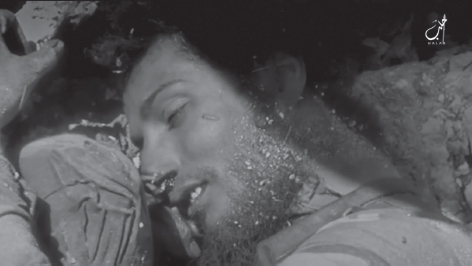
Figure 72: ISIS presents its dead fighter as smiling in Halab photo set. (Source: TAPSTRI)
At the heart of all ISIS propaganda is the worship of the dead fighter who met God while dying for the religion. In video segments featuring foreign fighters explaining why they went to Syria to fight for ISIS, it becomes clear that the story of the holy warrior inspired them to leave home and die. Of course, some who came to Syria to be holy warriors or suicide bombers find themselves digging latrines or performing other menial tasks. Martyrdom postponed.
The macho projection of the warrior was presented as the role of the “good Muslim,” and much of this aim was reflected in the titles of videos like Resolve of the Brave (al-Anbar) or Knights of Victory (al-Fallujah). Dead fighters sometimes become the latest avatar on social media. One example is followers’ veneration of the holy warrior al-Bilawi’s image in the summer of 2014 after he was killed by Iraqi forces.
Celebrated and Dead Foreign Fighters Featured in Dabiq
Dabiq Issue 9—Abu Mus’ab al-Almani and brother, originally from Germany, who died in attack under Wilayat Shemal Baghdad 4th Regiment Base attack.
Daqiq Issue 10—“Join the Caravan of Islamic State Knights in the lands of the crusades” with a batch of examples of dead fighters attributed to the Islamic State.
Dabiq Issue 11—Celebrated Najd attacker “Abu Sinan an-Najdi”
Abu Ja’far al-Almani, German fighter.
Dabiq Issue 12—Abu Junaydah al-Almani (Moroccan German). Abu Shurayh as-Silani (Sri Lanka).
Dabiq Issue 13—Abu Muharib al-Muhajir (a.k.a. Jihadi John, a British Arab).
Dabiq 14—Abu Sulayman al-Baljiki, Khalid al-Bakrawi (a.k.a. Abu Walid al-Baljiki), Muhammad Bilqa’id (a.k.a. Abu Abdil Aziz al-Jaza’iri), Najm al-Ashrawi (a.k.a. Abu Idris al-Baljiki)—Belgium attackers;
Abu Jandal al-Bangali-Dhaka fighter, traveled to Syria to be shot by 23mm autocannon.
Most of the al-Hayat videos featured a foreign fighter who was portrayed as brave for traversing all the dangers to get to Syria or Iraq to fight for the caliphate. From the first releases on the messages remains the same. For example, al-Ghurabaa: The Chosen Few of Different Lands—Abu Muslim from Canada (video from July 12, 2014), Abu Suhayb al-Faransi (video from March 7, 2015), and Stories from the Land of Living—Abu Khaled al-Cambodi from Australia (video from April 21, 2015) were all designed to exalt the holy warrior image as the face of ISIS instead of the face of cult members who were killed for the ambitions of a terrorist organization.
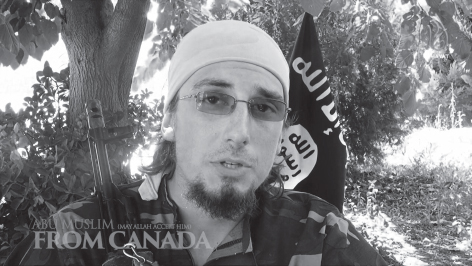
Figure 73: Canadian Andre Poulin appeared in third al-Hayat video designed to encourage recruits to leave Canada. (Source: TAPSTRI)
Taliban leader Khadim was killed, and shortly after Wilayat Khurusan acknowledges it with tribute and worship. al-Shaykh Khadim has passed and the revenge is coming released in March 2015. In March of 2016, a video was released applauding the contributions of dead Emir “Abu Ali Al-Anbari,” who was killed in a drone strike.
REPENT OR DIE
In the first edition of Dabiq, ISIS claims that hundreds of Iraqi police, law enforcement, and military “repented” (tawba) in Diyala, Kirkuk, al-Anbar, and Salahuddin. In a few official ISIS video releases, we also see officials “repent” their previous role in working for the Iraq government and be claimed by the Islamic State. But the message from ISIS remains “Repent Before We Apprehend You,” which has a video title all its own released through the Syrian regional ISIS media office, Wilayah Dimashq. Being “repentant” and then joining ISIS can also result in getting you featured in death. A man identified by ISIS as Abu Muhammad al-Ansari, who was a Syrian officer (Nusayri soldier) who turned to ISIS, died in Minnigh. His brief story was highlighted in Messages from the Land of Legends 2, released in August 2013 under the al-Furqan Media Foundation, the lead media center for ISIS materials and the original publishing foundation for the organization since its founding under Abu Mus’ab al-Zarqawi.
THE WOMEN OF THE CALIPHATE
Despite the vast amount of propaganda released by the Islamic State or al-Qaeda, very little of it features women. The few bits that have been released come from their print institutions, such as ISIS official publisher Maktabat al-Himmah’s pamphlets and the official magazine, Dabiq. The articles usually tell the stories of women who found sanctuary in the Islamic State and understanding from her new peers and an awareness of her noble mission. While it is known that women are involved in recruiting and other clandestine operations, there are no images released by the Islamic State showing what the lives of women were like during al-Baghdadi’s brutal reign.
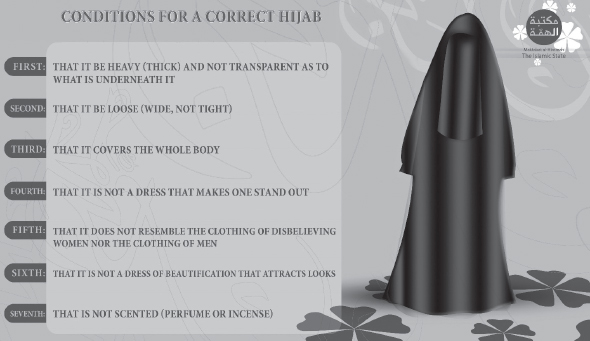
Figure 74: A graphic from Maktabat al-Himmah.
The Voice of Umm Sumayyah al-Muhajirah
In print, the life of women under ISIS was a vastly different world than the one seen in the violent videos featuring the men. In order to tap into the spirit of the women the terrorist group wanted to indoctrinate, there had to be a voice that could speak to the women about their role in the caliphate.
Addressing “my Muslim sister, the wife of the mujahid and mother of lion cubs,” Umm Sumayyah al-Muhajirah first appeared in Dabiq Issue 8 with the article “Twin Halves of Muhajirin” and then reappeared in Dabiq Issue 9 with “Slave-girls or prostitutes.” She appears again in Issues 11, 12, 13, and 14. But when the fifteenth issue of Dabiq came out in July 2016, a new voice spoke for and to women: Umm Khalid al-Finlandiyyah recounted “How I came to Islam,” a testimony of a woman who came from a “Christian” nation. In her story, she describes going to join ISIS after her husband was released from prison.
Narratives like the ones found in the Dabiq entries all come down to what ISIS wants from women—marrying ISIS fighters and bearing their children. There have been unofficial clips uploaded to the web of the al-Khanssaa Brigade or unofficial footage showing the treatment of women. One well-known clip included the stoning of a woman for adultery while her father watched. The treatment of women in the caliphate is mostly known through the testimony of women who have escaped.
YOU MUST COME TO THE CALIPHATE—THE HIJRAH MESSAGE
ISIS media constantly reinforces “obligations” for Muslims, and the first one is “hijrah from wherever you are to the Islamic State” and to “Rush to perform it” or “Rush to the shade of the Islamic State with your parents, siblings, spouses, and children. There are homes here for you and your families.”
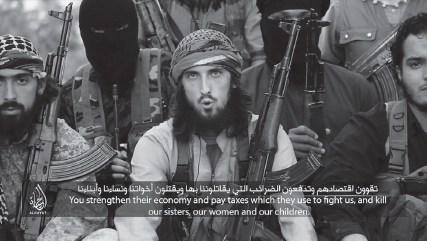
Figure 75: Al-Hayat video uses blame to encourage Muslims to leave their homes and travel to Syria. (Source: TAPSTRI)
If you can’t go to the Islamic State, then ISIS has a fallback option: “try in your location to organize bay’āt (pledges of allegiance to the Khalifah Ibrahim). Publish them as much as possible. Gather people in the masajid, Islamic centers, and Islamic organizations, for example, and make public announcements of bay’ah.
But if you can’t do that openly, ISIS has yet another fallback option: “If you live in a police state that will arrest you over such bay’āt, then use means of anonymity to convey your bay’ah to the world.”
The reason was clearly stated in Dabiq Issue 2:
“Your publicized bay’ah has two benefits. First it is a manifestation of the Muslims’ loyalty to each other and to their body. (And those who disbelieved are allies of one another.)… Second, it is a way to fill the hearts of the kuffār with painful agony.”
YOU MUST JOIN THE CALIPHATE—THE BAY T MESSAGE
T MESSAGE
A very common type of releases across the ISIS video spectrum is segments of young men holding up their hands with the index finger pointed up and swearing their loyalty as fighters to al-Baghdadi. This was typically the first video sent from any new region or from existing groups seeking to be acknowledged by ISIS and subsequently by everybody else. In addition to videos that come from the groups that pledge loyalty to al-Baghdadi, there are the videos that come from the wilayat that express jubilation at the announcements coming from abroad. Joy of the al-Khilafa Soldiers for the baya’a of their brothers in Nigeria was a release from al-Khair like several that came out in March 2015 after Boko Haram swore its loyalty to the al-Baghdadi. Then came videos from Dijlah, al-Furat, and others who joined in the theme.
There are times when the videos are sent ahead of a bay’āt, made by groups abroad as an invitation, like the Wilayat al-Furat release Message to the Muslims in Somalia released May 21, 2015. It was one of a half-dozen videos released. It was clearly intended to persuade al-Shabaab fighters to make alliances with ISIS instead of AQ. At the time, al-Shabaab fighters and leaders were split on this decision. In the case of Algeria Wilayat, the only video that exists from the wilayat was the bay’āt video.
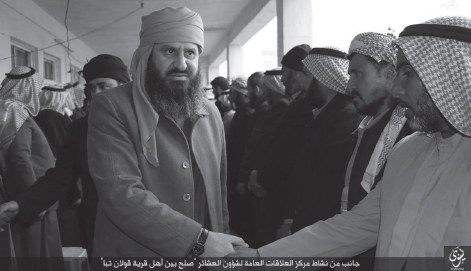
Figure 76: Clans in Nineveh renew their pledge to al-Baghdadi.
In other releases like Clans of al-Sham and Iraq renew their bay’a to al-Khilafa from June 7, 2015, you can see tribal leaders renew their oath of loyalty.
“THE BAD MUSLIMS”
ISIS is not simply focused upon exalting the righteous. In their publications, much of the content is aimed at shaming Muslims by accusing them of submitting to the dictators under the unbelievers or for engaging in what ISIS calls forbidden practices. They also frequently call others apostates and declare Takfir or excommunication on them. This divide-and-conquer tactic is root to their message and agenda.
The Rafidah (Shia Militias, Shrines, and Markets)
The first group that has to be dealt with are parts of a gray zone in which versions of the Islamic faith obscure their belief that the Sunnis embody the true and pure Muslim faith. First are the Rafidah, or Apostates (Muslims who came to Islam but who left it for another religion). This term was applied to Shia Muslims by various Salafist groups, especially in ISIS media aimed at the Iranians. The title of the thirteenth issue of Dabiq was “The Rafidah: From Ibn Saba’ to the Dajjal”1 and focused its efforts on explaining that the Rafidah were “a party of shirk and apostacy.” In addition to quickly branding them as murtaddin (apostate), they also make the contrast quite stark. A Dabiq Issue 7 article’s title was “From Hypocrisy to Apostacy” with a picture of imams standing with “Je Suis Charlie” images after the Charlie Hebdo attack. The subtitle said it all: “The Extinction of the Greyzone.”2
The Rafidah are the source of much angst for ISIS. One has only to watch ISIS media to see their aims. There are video clips of its members attacking the “rafidah” (Apostates or Muslims who left Islam), articles about their historical crimes or apostasy, and justifications for their mass murder by selective interpretations of the Quran by scholars including Ibn Taymiyyah. The conclusion was that the Rafidah are mushirk (loosely translated, “those who engage in Shirk” or polytheism, the belief in more than one God).
It has led to the torture and execution of various bloggers and media activists who were condemned for sharing information deemed offensive to the caliphate. It seems that the caliphate alone has the authority to decide who will be killed and for what offense.
In Syria, ISIS’s rhetorical attacks on Assad’s army are largely due to the ISIS involvement in a civil war and the fact that Assad is an Alawite, a minority Shia sect.
The differences between the two sides are so great that any reconciliation is out of the question. The ISIS videos made in Syria often show what happens to government officials and members of the Syrian army detained by ISIS forces.
In Iraq, their videos focus on the Shia militias from Iran and Iraq (called “the Safavid armies”) who are involved in fighting ISIS to increased hatred. ISIS posts pictures to justify its campaign by showing dead Sunni children killed by Shia militias, as well as Iraqi or Syrian forces.
Morsi and the Egyptian Brotherhood
ISIS referred to the Muslim Brotherhood as a cancer in Dabiq Issue 14. Despite sharing ideological roots dating back decades, ISIS maintains the position that the Muslim Brotherhood is now a nationalist organization, seeking to be involved in secular institutions while participating in the politics of a sham democracy.
The Taghut and the Liberators
The insult of taghut or “idolator” is often used by ISIS to label other Muslim religious leaders as ignorant, like the pre-Islamic Arabian peoples who worshipped idols. Based on the revelations in the Quran, all authority and legitimacy comes from Allah. According to ISIS, all leaders not part of the ISIS hierarchy have no legitimacy or authority and are to be insulted with the word taghut.
ISIS routinely aims its threats at leaders in North Africa, the Arabian Peninsula, the entire Middle East, and Central Asian regions. It calls for the overthrow of all these leaders and their regimes so that Allah’s will will be fulfilled and the faithful liberated to live under ISIS rule.
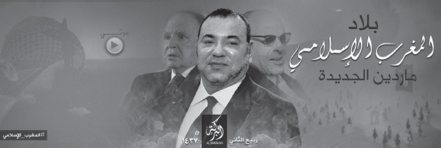
Figure 77: ISIS video released in January 2016 aimed at leaders of North Africa. (Source: TAPSTRI)
The other implication in the word was that the taghut serve their own self-interests. The word taghut describes a person who has ignored the will of Allah and is corrupt. The images in videos of regional leaders who are directly impacted by ISIS are meant to show the citizens of those countries that their leaders are beholden to outside forces, including the United States, France, Russia, and the United Kingdom.
For example, Dabiq 9 was titled “They Plot and Allah Plots” with a picture of Secretary of State Kerry meeting with other leaders, including imams, to broker a deal to destroy the Islamic State. ISIS regards this as not only a betrayal by Muslim countries involved in this conspiracy, but also a betrayal of Muslims and a grave sin in the eyes of Allah.
Masoud Barzani, president of Iraqi Kurdistan Region since 2005, was portrayed as a puppet of the US. A Dabiq 10 feature dismisses the Syrian Kurd YPG as merely proxies for American efforts. Other examples come from regional releases like those from Wilayat Khorasan, which labels the Pakistani Army as “apostates” in releases like Targeting the Apostate Pakistani Army in the Area of Khaybar with Mortars.
The Moderates and Scholars Are Apostates
ISIS is not hesitant to attack Muslim scholars who have criticized their destruction of traditional Islamic life. Segments in videos show Muftis and Imams who have denounced the Islamic State for its hijacking their religion. Then there are the segments in their magazines: Dabiq 6’s “Misleading Scholars” or Dabiq 7’s “From Hypocrisy to Apostasy: The Extinction of the Grayzone,” featuring two imams with small printed signs saying “Je Suis Charlie” at a demonstration of solidarity after the Charlie Hebdo attacks in Pars.
In order to wage full war on Islam, the Islamic State has targeted the ulema, learned scholars, in order to discredit their calls for ISIS to cease its gross perversion of the religion. Targets of their spite and threats include Hamza Yusuf, Yasir Qadhi, Suhaib Webb, Hisham Kabbani, Bilal Philips, and Pierre Vogel.
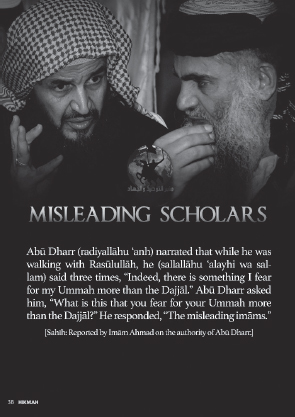
Figure 78: Abu Muhammad al-Maqdisi is a frequent target of attack by ISIS media releases like this panel from Dabiq. (Source: TAPSTRI)
There are no scholars immune from the attacks. The mentor of ISIS “godfather” Abu Musab al-Zarqawi was as much a target as the moderates. The noted Salafist Abu Muhammad Al-Maqdisi has been the subject of many attacks by the Islamic State, which regards him as a confused apostate. In Dabiq 11, ISIS again asked the question, “who are the true fuqaha and scholars?” followed by “and who are the evil scholars?” The article had photos of al-Maqdisi and others.
Another target of constant attacks was the Saudi Grand Mufti, Abdul-Aziz ash-Sheikh who has condemned ISIS and called them a cancer and existential threat to Islam. Dabiq 13 condemned the Grand Mufti Abdul-Aziz as an apostate.
Those Who Help the Kufar Are Apostates
In a release via Wilayat al-Furat in Iraq, there was a segment where an Iraqi confesses his sins against the Islamic State and expresses a sense of relief that he has finally gotten this burden off his chest. He no longer has to hide his transgressions from the Islamic State. He was then executed for his sins as a reminder that those who took action against the State would be severely punished.
Releases like this often have titles like Wilayah Khorasan’s “Healing the Chest for the slaughtering of the spy” or “Harvest of the Spies.” Victims are forced to confess spying or working against the caliphate in some way when they were either entirely innocent of the charge or actually worked for the Iraqi, Syrian, Libyan, Egyptian, or other governments that ISIS currently is at war with.
The videos and photo slideshows follow a pattern: accusation, confession, and then punishment to show a simple system of accountability under the rules set by the Islamic State. In some cases the victims look into the camera and plead for others to “listen to me please, don’t be foolish,” as if it may save their lives.
The Media War with Al-Qaeda
ISIS has been fighting with al-Qaeda through media since the days of Zarqawi. Moreover, the AQ leader ordered him to lower his profile and think long-term. ISIS continues to assail the veteran terrorist organization as out of touch and impotent.
A fighter interviewed in Dabiq told them that many fighters were leaving al-Shabaab precisely because the terror group didn’t give bay’ah to al-Baghdadi. He also said that many of the fighters are from other countries in East Africa who go to Somalia for hijrah.3
THE GOOD GUYS PAY ZAKAH
As further proof that ISIS was a functioning state was a collection of zakah (tax) throughout its territories. The videos released are intended to show viewers that good citizens willingly pay their zakah, while those who do not will suffer dire consequences. The video claims to show that money collected is distributed fairly and supports a viable society with the judicial means to resolve disputes and take care of those in need.
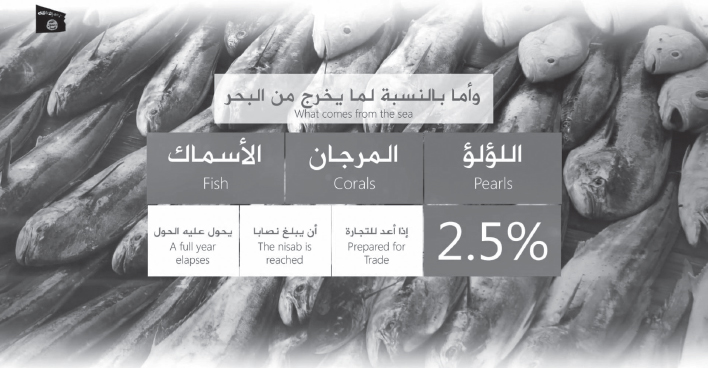
Figure 79: Screenshot from al-Furqan release “And They Give al-Zakat” from June 2015. (Source: TAPSTRI)
THE DESTRUCTION OF SHIRK
ISIS received wide and mostly unfavorable news coverage for the destruction of antiquities throughout areas under its control. The videos and photographs of the destruction of cemeteries in Iraq and Libya, wrecking the ancient city of Palmyra in Syria, blowing up the city of Nimrud have captured worldwide attention. The presentations begin with an ISIS representative standing before the camera and explaining why it was forbidden to worship the shrines and monuments of the past and that it was their duty to watch for “manifestations of shirk” that could lead Muslims astray.
Videos from Nineveh have shown the destruction of the Lamassu, Tomb of Jonah, and other ancient Assyrian and Babylonian relics. Other videos from Libya show fighters kicking over graves. Clips from Iraq show the detonation of Shia shrines or the toppling of Christian churches in which the cross was removed and a black flag replaced it. Concerns for competition aren’t limited to Syria and Iraq when it comes to Shirk. Libya’s Tarabulus Media released “Removing Manifestations of al-Shirk” on March 16, 2015.
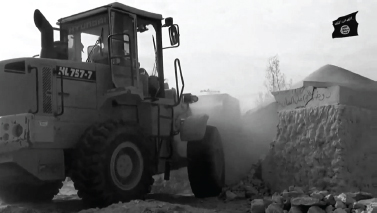
Figure 80: A bulldozer destroys a Sufi shrine in Libya. (Source: TAPSTRI)
Dabiq 8 described these destructive operations as “Erasing the legacy of a ruined nation,” one way to characterize the death cult’s attempt to erase the history of Iraq and replace it with a new history under ISIS tyranny. The terrorist organization prides itself on the destruction of early temples that predate the Prophet Muhammad. For example, Dabiq 11, covered the destruction of the “Temple of Baalshamin,” which ISIS blew up in August, 2015. It had stood for nearly 2,000 years.
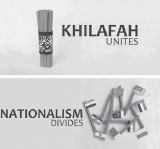
Figure 81: ISIS graphic aimed at discouraging nationalism. (Source: TAPSTRI)
ABANDON NATIONALISM
One of the constant criticisms of other terrorist organizations by ISIS was that they served to bolster nationalism because this is contrary to the will of Allah. This was a way for ISIS to gain hegemony over other terror organizations, including the Taliban.
PROPHECY
The constant evocation of the “End Times” and the Day of Judgment pervades ISIS propaganda in Dabiq and elsewhere. For a cult steeped in death and destruction, this is hardly surprising. Before the day of wrath arrives there will be a showdown with unbelievers. This confrontation is forecast in videos, flyers, and elaborate pamphlets—most of the printed material is in Arabic and features sermons on how to prepare for the end of days.
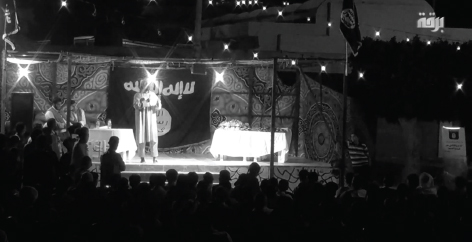
Figure 82: ISIS outdoor da’wah (preaching) event from November 2014. (Source: TAPSTRI)
REACHING THE LONE WOLF AUDIENCE
ISIS materials, like those of al-Qaeda’s before them, urge extremists throughout the world to carry out lone wolf attacks. Unfortunately, the unstable of the world are receptive. Justin Nojan Sullivan, a.k.a. “The Mujahid,” was charged with material support on June 22, 2015. He told an undercover law officer: “I liked IS from the beginning then I started thinking about death and stuff so I became Muslim.” Sullivan gave the undercover officer advice on how to build a silencer by passing on instructions he had gotten via the Internet.
Abu Muhammad al-Adnani was the latest terrorist leader to call for Loner attacks in May 2016, just before Ramadan. He called for improvised attacks around the world as a sign that the caliphate was strong while calling for Muslims to prepare for the Holiest month of the Muslim calendar.
THE PERCEPTIONS OF MUSLIMS USED BY ISIS
“Put simply, extremist groups use the stereotypes of their targets.”
—Mia Bloom4
When we first started dealing with jihadist videos, we were often trying to find a martyrdom video to learn what we could about an attacker. Even as ISIS media were preparing to release Flames of War, we thought we had seen the different levels of capability in these violent groups. The more we dug to see who was publishing and how they were getting it out on the web, the more we started seeing videos of the group with smiling kids. Despite the onslaught against their “nation” state, they continue to push the fantasy through videos that theirs is a paradise dangling on the precipice of destruction, they continue the fantasy of paradise though their video messages. There, one will enjoy only the best bread, properly killed sheep, and good water, all reserved for the Good Muslims who have sworn their allegiance to Abu Bakr Al-Baghdadi; these are presented in a level of propaganda equal to that of Saddam Hussein or the Nazis. There are two major tools of the ISIS media campaign. First, the initial release of products for consumption. Second, the reactive nature of both supporters and the targets of their campaigns. Using the Internet to upload files was only the beginning of their strategy to show the caliphate as heaven on earth.
The general public perception of ISIS was understandably shaped by the videos of the executions of Americans and Europeans or the mass executions of Iraqis, Syrians, Yemenis, Libyans, Egyptians, Afghani, and others. But those seeking to be part of something big are attracted to the caliphate despite such horrors. Repetition. Already said.
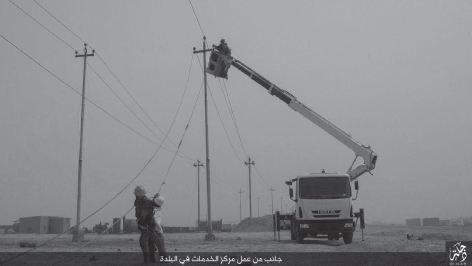
Figure 83: ISIS photosets show repair and upkeep of power.
“Jannah” Gonna Believe This, but the Services Are Under Control
There are many ISIS slide shows and videos that show a functional state in which roads are repaired, maintained, and well lit, clean water is supplied to residents, and the government looks after their welfare—if you are a believer. In Dabiq 4, they claimed that “soldiers of Allah do not liberate a village, town or city, only to abandon its residents and ignore their needs” and included photographs with captions such as “repairing a bridge in al-Khayr” or “restoring electricity in the city of ar-Raqqah.” They additionally promise “cancer treatment for the children of Ninawa” and “street cleaning services.”
Some videos and related slideshows, however, show things like the hisbah patrol (religious police) keeping an eye out for people breaking laws about everything from the way one is dressed to someone sneaking a cigarette. They demonstrate what can happen if you disobey the Islamic State, burning cartons of forbidden cigarettes or flogging a prisoner for disobedience—or exacting severe punishments ending in death. However, they also portray the support of the people, with onlookers always cheering on punishment of the apostate, spy, or, worse, a disbeliever.
THE MUJATWEETS
A series of eight videos that came out in 2014 aimed at conveying a positive image of ISIS by making it appear that the fighters were happy, children under the caliphate were happy, food made in the caliphate was healthy, and other scenes encouraging fighters to come to the new utopia.
EID, THE BEST TIME OF YEAR
According to the media utopia of ISIS, there was prosperity under the shariah as enforced by ISIS. This prosperity was highlighted by video and photo releases covering the observance of Eid al-Fitr or like the title Eid Spirit in Wilayat al-Furat from Sept 26, 2015, celebrating Eid al-Adha or The Feast of Sacrifices, a commemoration of the story of Abraham’s willingness to obey God and sacrifice his son, Isaac.
THE EDUCATION SYSTEM
ISIS released videos showing children learning basic Arabic as well as basic weapons training starting from an early age. The education is geared to making future jihadists. The terrorist group has also released various pdfs to further indoctrinate supporters’ children into the death cult.
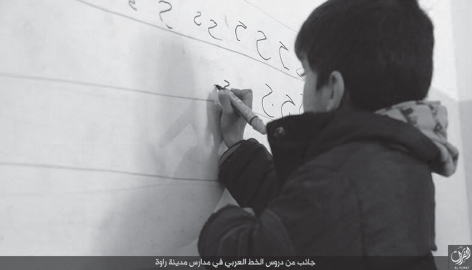
Figure 84: Child learning Arabic. (Source: TAPSTRI)
In addition, there are dozens of training camp videos and videos featuring the “cubs of the khilafah,” or the child soldiers who are trained to be the next generation of fighters. In one case, a child named Abdallah was featured first in a school with other children before appearing a year later in a video in which he is killing a Russian FSB officer.
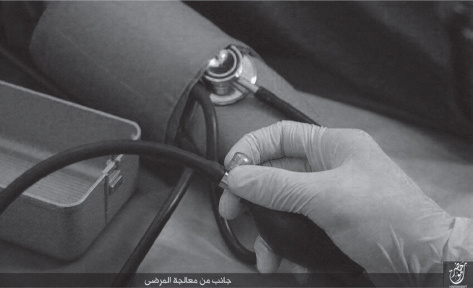
Figure 85: Health Care Pulse. (Source: TAPSTRI)
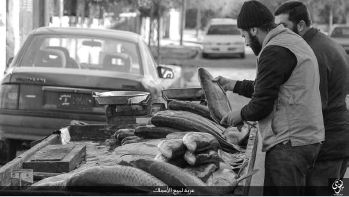
Figure 86: Fresh Fish Market. (Source: TAPSTRI)
THE FOOD IS HEALTHY AND DELICIOUS
Abundant food provided by the caliphate was the theme of several feature photo sets and videos. There are many pictures of greenhouses bursting with well-tended produce or markets filled with good healthy food. The hisbah patrol stops in to make sure items sold are compliant with halal rules, while the image suggests there’s a world of good health under the caliphate.
The image of the Islamic State as provider is a powerful message aimed at both the local and international recruiting targets.
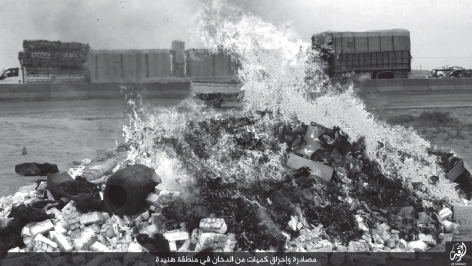
Figure 87: Cigarette Burn Pile. (Source: TAPSTRI)
NO MORE SMOKING
ISIS was keen on stomping out smoking. You might be sentenced to death for other vices under ISIS rule, but at least you would have healthy lungs. The pictures typically show a pile of recently confiscated cartons of cigarettes, cases of alcohol, cannabis, or other prohibited substances being burned. There are periodic photo sets released to remind people in the caliphate that indulging these vices are grounds for flogging citizens. Or worse.
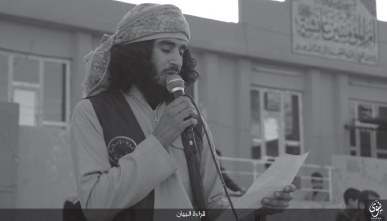
Figure 88: Member of the Hisbah patrol reads out the vices of others before a crowd. (Source: TAPSTRI)
NO MORE VICES, THANKS HISBAH!
“Clamping down on sexual deviance” was very important to the caliphate. In Dabiq 7, ISIS blamed what it called “sexual deviance” on the “sexual revolution” that occurred “five decades ago” in the West. ISIS had ways of “curing” such deviance, which included throwing gay men off towers, stoning men and women to death for adultery, or flogging those caught possessing pornography.
ISIS routinely releases hisbah patrol videos that show them as law and order enforcers for any number of violations from improper preparation of food, selling cigarettes, or playing musical instruments. Pictures are infrequently published of piles of instruments in burn piles.
THE GOLD DINAR
To complete much of the ISIS shift off the grid, there was the campaign known as “Return of the Gold Dinar” in which the Islamic State announced it would simply print its own currency based on gold. It came with hashtags #return_of_the_gold_dinar and a series of videos and photo sets and was featured in several editions of Dabiq.
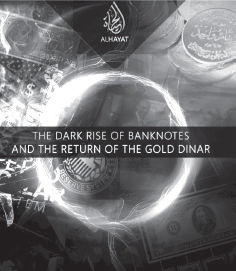
Figure 89: Al-Hayat advertises its videos on the Return of the Gold Dinar. (Source: TAPSTRI)